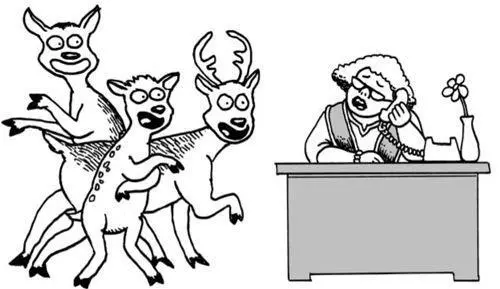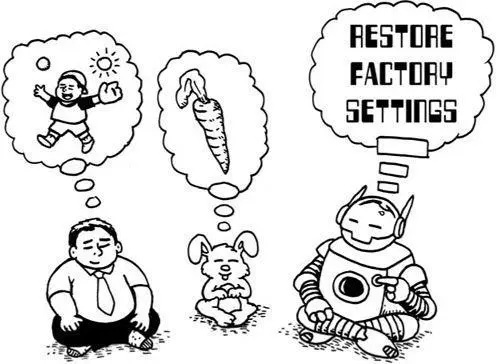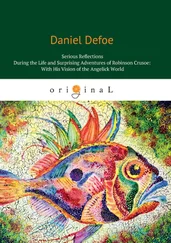Tan, Chade-Meng - Search Inside Yourself - The Unexpected Path to Achieving Success, Happiness (and World Peace)
Здесь есть возможность читать онлайн «Tan, Chade-Meng - Search Inside Yourself - The Unexpected Path to Achieving Success, Happiness (and World Peace)» — ознакомительный отрывок электронной книги совершенно бесплатно, а после прочтения отрывка купить полную версию. В некоторых случаях можно слушать аудио, скачать через торрент в формате fb2 и присутствует краткое содержание. Год выпуска: 2012, Издательство: Harper Collins, Inc., Жанр: Старинная литература, на английском языке. Описание произведения, (предисловие) а так же отзывы посетителей доступны на портале библиотеки ЛибКат.
- Название:Search Inside Yourself: The Unexpected Path to Achieving Success, Happiness (and World Peace)
- Автор:
- Издательство:Harper Collins, Inc.
- Жанр:
- Год:2012
- ISBN:нет данных
- Рейтинг книги:4 / 5. Голосов: 1
-
Избранное:Добавить в избранное
- Отзывы:
-
Ваша оценка:
- 80
- 1
- 2
- 3
- 4
- 5
Search Inside Yourself: The Unexpected Path to Achieving Success, Happiness (and World Peace): краткое содержание, описание и аннотация
Предлагаем к чтению аннотацию, описание, краткое содержание или предисловие (зависит от того, что написал сам автор книги «Search Inside Yourself: The Unexpected Path to Achieving Success, Happiness (and World Peace)»). Если вы не нашли необходимую информацию о книге — напишите в комментариях, мы постараемся отыскать её.
Search Inside Yourself: The Unexpected Path to Achieving Success, Happiness (and World Peace) — читать онлайн ознакомительный отрывок
Ниже представлен текст книги, разбитый по страницам. Система сохранения места последней прочитанной страницы, позволяет с удобством читать онлайн бесплатно книгу «Search Inside Yourself: The Unexpected Path to Achieving Success, Happiness (and World Peace)», без необходимости каждый раз заново искать на чём Вы остановились. Поставьте закладку, и сможете в любой момент перейти на страницу, на которой закончили чтение.
Интервал:
Закладка:
“Maybe you should concentrate more on developing the instinct part rather than the gut part.”
From Mindfulness to Emotional Intelligence
Our approach to cultivating emotional intelligence begins with mindfulness. We use mindfulness to train a quality of attention that is strong both in clarity and stability. We then direct this power-charged attention to the physiological aspects of emotion so we can perceive emotion with high vividness and resolution. The ability to perceive the emotional experience at a high level of clarity and resolution builds the foundation for emotional intelligence.
And we live happily ever after.
In the upcoming chapters, we will explore this approach in more detail and then build additional skills on top of it to develop all five domains of emotional intelligence.
Mindfulness in Two Minutes
Most evenings, before we sleep, my young daughter and I sit in mindfulness together for two minutes. I like to joke that two minutes is optimal for us because that is the attention span of a child and of an engineer. For two minutes a day, we quietly enjoy being alive and being together. More fundamentally, for two minutes a day, we enjoy being. Just being. To just be is simultaneously the most ordinary and the most precious experience in life.
As usual, I let my experience with a child inform how I teach adults. This daily two-minute experience is the basis of how I introduce the practice of mindfulness in introductory classes for adults.
In learning and teaching mindfulness, the good news is that mindfulness is embarrassingly easy. It is easy because we already know what it’s like, and it’s something we already experience from time to time. Remember that Jon Kabat-Zinn skillfully defined mindfulness as “paying attention in a particular way: on purpose, in the present moment, and non-judgmentally.” Put most simply, I think mindfulness is the mind of just being. All you really need to do is to pay attention moment-to-moment without judging. It is that simple.
The hard part in mindfulness practice is deepening, strengthening, and sustaining it, especially in times of difficulty. To have a quality of mindfulness so strong that every moment in life, even in trying times, is infused with a deep calmness and a vivid presence, is very hard and takes a lot of practice. But mindfulness per se is easy. It is easy to understand and easy to arise in ourselves. That ease is what I capitalize on as an instructor.
In my classes, after explaining some of the theory and brain science behind mindfulness, I offer two ways to experience a taste of mindfulness: the Easy Way and the Easier Way.
The creatively named Easy Way is to simply bring gentle and consistent attention to your breath for two minutes. That’s it. Start by becoming aware that you are breathing, and then pay attention to the process of breathing. Every time your attention wanders away, just bring it back very gently.
The Easier Way is, as its name may subtly suggest, even easier. All you have to do is sit without agenda for two minutes. Life really cannot get much simpler than that. The idea here is to shift from “doing” to “being,” whatever that means to you, for just two minutes. Just be.
To make it even easier, you’re free to switch between the Easy Way and the Easier Way anytime during these two minutes. Any time you feel like you want to bring awareness to breathing, just switch to Easy. Any time you decide you’d rather just sit without agenda, just switch to Easier. No questions asked.
This simple exercise is mindfulness practice. If practiced often enough, it deepens the inherent calmness and clarity in the mind. It opens up the possibility of fully appreciating each moment in life, every one of which is precious. It is for many people, including myself, a life-changing practice. Imagine—something as simple as learning to just be can change your life.
Best of all, it is something even a child knows how to do. Oh, and an engineer too.
In the next chapter, we will take a deep dive into mindfulness.

“Like the man says, bro: Bee; just bee.”
CHAPTER TWO

Breathing as if Your Life Depends on It
The Theory and Practice of Mindfulness Meditation
By non-doing, all doing becomes possible.
—Lao Zi

There is nothing mysterious about meditation. It’s really just mental training.
The scientific definition of meditation , as suggested by Julie Brefczynski-Lewis, is “a family of mental training practices that are designed to familiarize the practitioner with specific types of mental processes.” 1

Brain Boot Camp
Traditional definitions of meditation are very close to the modern scientific one above. The Tibetan word for meditation is Gom , which means “to familiarize or to habituate.” In Pali, the 2,600-year-old language of the earliest Buddhist texts, the word for meditation is Bhavana , which means “to cultivate,” as in planting crops. Even in ancient societies with long meditation traditions, meditation was not seen as something magical or mysterious—it was just mental training. So if you come to meditation expecting magic, I’m very sorry; magic is three doors down the corridor. 2
As the scientific definition of meditation above correctly suggests, there are many types of meditation designed to train different faculties of the mind. The specific type of meditation we are interested in for the purpose of developing emotional intelligence is mindfulness meditation, which was briefly introduced in the preceding chapter.
If meditation is about mental training, then what mental faculties does mindfulness train? Mindfulness trains two important faculties, attentionand meta-attention.Attention is something we all understand. William James has a very nice definition for it: “taking possession by the mind, in clear and vivid form.” 3
Meta-attention is attention of attention, the ability to pay attention to attention itself. Huh? Simply put, meta-attention is the ability to know that your attention has wandered away. Let’s say you are paying attention to an object, and eventually your attention wanders away to something else. After a while, there is something in your mind that “clicks” to let you know, hey, your attention has wandered. That faculty is meta-attention.
Meta-attention is also the secret to concentration. The analogy is riding a bicycle. The way you keep a bicycle balanced is with a lot of micro-recoveries. When the bike tilts a little to the left, you recover by adjusting it slightly to the right, and when it tilts a little to the right, you adjust it slightly to the left. By performing micro-recoveries quickly and often, you create the effect of continuous upright balance. It is the same with attention. When your meta-attention becomes strong, you will be able to recover a wandering attention quickly and often, and if you recover attention quickly and often enough, you create the effect of continuous attention, which is concentration.
Читать дальшеИнтервал:
Закладка:
Похожие книги на «Search Inside Yourself: The Unexpected Path to Achieving Success, Happiness (and World Peace)»
Представляем Вашему вниманию похожие книги на «Search Inside Yourself: The Unexpected Path to Achieving Success, Happiness (and World Peace)» списком для выбора. Мы отобрали схожую по названию и смыслу литературу в надежде предоставить читателям больше вариантов отыскать новые, интересные, ещё непрочитанные произведения.
Обсуждение, отзывы о книге «Search Inside Yourself: The Unexpected Path to Achieving Success, Happiness (and World Peace)» и просто собственные мнения читателей. Оставьте ваши комментарии, напишите, что Вы думаете о произведении, его смысле или главных героях. Укажите что конкретно понравилось, а что нет, и почему Вы так считаете.







![Chade-Meng Tan - Search Inside Yourself - Increase Productivity, Creativity and Happiness [ePub edition]](/books/703803/chade-thumb.webp)



